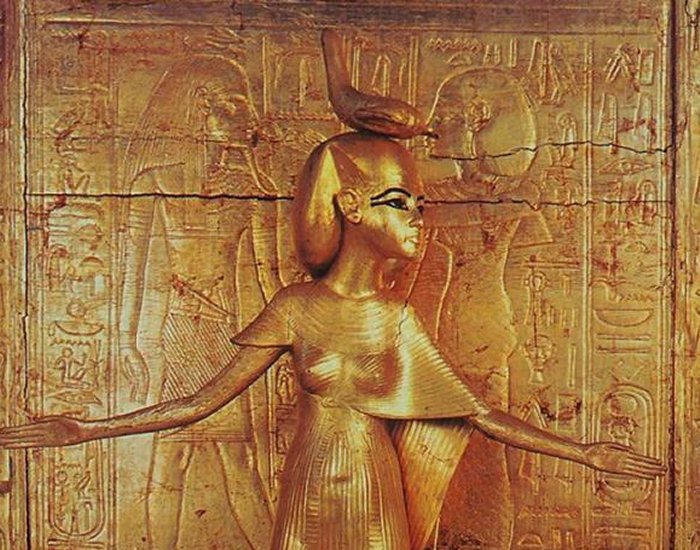Serket: Scorpion Goddess Who Could Heal Poisonous Bites And Sting Evildoers
A. Sutherland - AncientPages.com - In ancient Egyptian beliefs, Serket (Serqet, Selkis) controlled the breath of life, protected righteous deeds, healed deadly bites of snakes and scorpions, and punished evildoers.
Serket and her scorpion. Edfu Temple. Image credit: MatthiasKabel - CC BY-SA 3.0
The scorpion is a symbol that appeared on the earliest Egyptian artifacts related to the earliest human settlements to the beginning of the Early Dynastic Period around 3100 BC. Serket was depicted as a scorpion with the head and torso of a woman or a woman with a scorpion on her head.
In a strong association with the scorpion, which is famous for protecting its young, also Serket symbolizes the robust protection of motherhood and nurturing of children. In this aspect, she was often compared to the Egyptian goddess Isis, who protected Horus from Seth, the god of chaos, and during the child's infancy.
Generally viewed as a benevolent and protective deity, Serket was given different and beautiful titles. Some of them are: "Lady of Heaven," "Mistress of the Sacred Land," "Lady of the Beautiful Tent," and "The Mistress of the Beautiful House," but this goddess could also punish if necessary when she disapproved of something or someone.
Ancient Egyptians believed that Serket had power over snakes, scorpions, and their poisonous and deadly bites. Thus, she could sting evildoers and cure others who suffered from scorpion stings and snake bites.
Serket protecting the shrine for the canopic vases of the Tomb of Tutankhamon. Image credit: National Museum, Cairo, Egypt.
Because Serket could cure snake bites, she was sometimes known as the protector from Apep (or Apophis), a demon in snake figure in ancient Egypt's beliefs, widely known as the evil snake god.
Serket also plays a role in the fight against the serpent.
In Coffin Texts spell 752, the deceased says: "I am skilled in the craft of Serket-Hetyt; therefore I will drive off Apophis, ferrying across the firmament."
The goddess's protective role (alone and in the company of other deities) is attested in the Pyramid Texts when the deceased king says: "My mother is Isis, my nurse is Nephthys… Neith is behind me and Serket is before me…" (PT 1375).
Together with three other goddesses (Nephthys, Isis, Neith), Serket protected the body and vital organs of the deceased.
The organs were traditionally stored in the canopic jars and guarded by four minor deities called the 'Four Sons of Horus.'
One of them was the baboon-headed Hapy, who guarded the lungs (protected by Nephthys). Another was the human-headed Imsety, who guarded the liver (and who was himself guarded by Isis). The third was the jackal-headed Duamutef, who defended the stomach (often protected by Neith), and the falcon-headed Qebesenuef, guardian of the intestines (often protected by Serket).
The jars were identified with the four protective goddesses Isis, Nephtys, Neith, and Serket.
This deity did not have many temples raised in her honor, but she had a large number of priests in many communities. She was initially worshiped in the Delta, but her popularity spread throughout the land, and cult centers were established at Djeba (Edfu) and Per-Serqet (Pselkis, el Dakka).
Ancient Egyptians believed that they could save themselves from all venomous creatures by venerating the scorpion goddess.
The goddess was associated with magic, and many magical spells confirm her role as a patroness of practitioners of magical medicine dealing with poisonous bites of scorpions and snakes.
Written by – A. Sutherland - AncientPages.com Senior Staff Writer
Copyright © AncientPages.com All rights reserved. This material may not be published, broadcast, rewritten or redistributed in whole or part without the express written permission of AncientPages.com
Expand for referencesReferences:
Hart, G. A Dictionary of Egyptian Gods and Goddesses
Jackson, Roy. Egypt
More From Ancient Pages
-
 King Geirrod Betrayed His Brother Agnar And Sent Him To Die But Justice Finally Prevailed
Featured Stories | Feb 14, 2024
King Geirrod Betrayed His Brother Agnar And Sent Him To Die But Justice Finally Prevailed
Featured Stories | Feb 14, 2024 -
 Dropa Stones: Did A 12,000 Year-Old Extraterrestrial Spaceship Crash On Earth?
Featured Stories | Oct 2, 2015
Dropa Stones: Did A 12,000 Year-Old Extraterrestrial Spaceship Crash On Earth?
Featured Stories | Oct 2, 2015 -
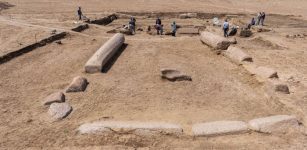 Ancient Temple Dedicated To God Zeus Discovered In Sinai, Egypt
Archaeology | Apr 26, 2022
Ancient Temple Dedicated To God Zeus Discovered In Sinai, Egypt
Archaeology | Apr 26, 2022 -
 Steamship SS Mesaba Sent Warning To RMS Titanic In 1912 – Her Wreck is Now Identified
Archaeology | Sep 27, 2022
Steamship SS Mesaba Sent Warning To RMS Titanic In 1912 – Her Wreck is Now Identified
Archaeology | Sep 27, 2022 -
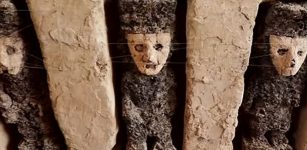 Wooden Pre-Columbian Human-Like Statues Discovered At Chan Chan Complex In Peru
Archaeology | Oct 25, 2018
Wooden Pre-Columbian Human-Like Statues Discovered At Chan Chan Complex In Peru
Archaeology | Oct 25, 2018 -
 Norse Watcher Spirit Vörðr Followed A Person From Birth To Death
Featured Stories | Dec 6, 2017
Norse Watcher Spirit Vörðr Followed A Person From Birth To Death
Featured Stories | Dec 6, 2017 -
 In The Neanderthal Site Of Combe-Grenal, France: Hunting Strategies Were Unaffected By Changing Climate
Archaeology | Jan 19, 2023
In The Neanderthal Site Of Combe-Grenal, France: Hunting Strategies Were Unaffected By Changing Climate
Archaeology | Jan 19, 2023 -
 Monumental Fortification That Protected The Kings Of Jerusalem Unearthed In The City Of David
Archaeology | Jul 23, 2024
Monumental Fortification That Protected The Kings Of Jerusalem Unearthed In The City Of David
Archaeology | Jul 23, 2024 -
 Unknown Purpose Of The Mysterious Huge Iron Age Ceramic Sharjah Jar Puzzles Scientists
Archaeology | Oct 7, 2022
Unknown Purpose Of The Mysterious Huge Iron Age Ceramic Sharjah Jar Puzzles Scientists
Archaeology | Oct 7, 2022 -
 Early Humans Reached Northwest Europe 45,000 Years Ago – New Research Shows
Human Beginnings | Jan 31, 2024
Early Humans Reached Northwest Europe 45,000 Years Ago – New Research Shows
Human Beginnings | Jan 31, 2024 -
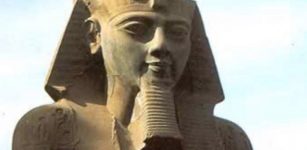 Colossus of Ramesess II At Karnak Temples Is Undergoing Restoration
Archaeology | Feb 24, 2017
Colossus of Ramesess II At Karnak Temples Is Undergoing Restoration
Archaeology | Feb 24, 2017 -
 Strange Underwater Mini-Pyramid Older Than Stonehenge With Unknown Purpose – Who Built It?
Featured Stories | Sep 12, 2021
Strange Underwater Mini-Pyramid Older Than Stonehenge With Unknown Purpose – Who Built It?
Featured Stories | Sep 12, 2021 -
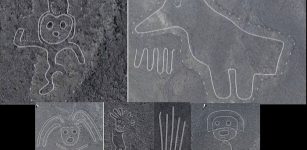 168 Unknown Geoglyphs Discovered In The Nazca Desert By Drones
Archaeology | Dec 19, 2022
168 Unknown Geoglyphs Discovered In The Nazca Desert By Drones
Archaeology | Dec 19, 2022 -
 8-Million-Year-Old Jaw May Offer Evidence Humans Evolved In Europe Instead Of Africa – Controversial Theory Suggests
Archaeology | Apr 24, 2019
8-Million-Year-Old Jaw May Offer Evidence Humans Evolved In Europe Instead Of Africa – Controversial Theory Suggests
Archaeology | Apr 24, 2019 -
 Mysteries Of The Great Dismal Swamp – Unexplained Vanishings, Bewildering Encounters With Weird Beings, And Scary Legends
Featured Stories | Dec 22, 2024
Mysteries Of The Great Dismal Swamp – Unexplained Vanishings, Bewildering Encounters With Weird Beings, And Scary Legends
Featured Stories | Dec 22, 2024 -
 Traces Of An Ancient Near East Civilization In America – Lost Tribes And Unorthodox Discoveries – Part 1
Civilizations | Nov 8, 2020
Traces Of An Ancient Near East Civilization In America – Lost Tribes And Unorthodox Discoveries – Part 1
Civilizations | Nov 8, 2020 -
 On This Day In History: Count Leo Tolstoy Was Censored – On Feb 20, 1901
News | Feb 20, 2017
On This Day In History: Count Leo Tolstoy Was Censored – On Feb 20, 1901
News | Feb 20, 2017 -
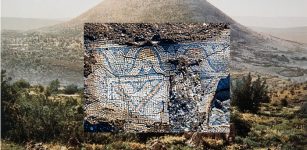 1,300-Year-Old Church Discovered Near Mt. Tabor In Lower Galilee, Israel
Archaeology | Jul 28, 2020
1,300-Year-Old Church Discovered Near Mt. Tabor In Lower Galilee, Israel
Archaeology | Jul 28, 2020 -
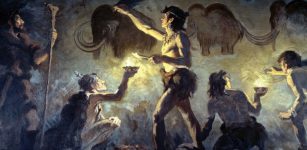 Solutrean People: Were First Americans European Stone Age People?
Civilizations | Feb 23, 2018
Solutrean People: Were First Americans European Stone Age People?
Civilizations | Feb 23, 2018 -
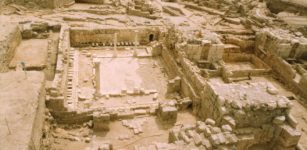 Large Roman Public Latrine With 60 Wooden Seats Discovered In Bet Shean, Israel
Archaeology | Sep 25, 2023
Large Roman Public Latrine With 60 Wooden Seats Discovered In Bet Shean, Israel
Archaeology | Sep 25, 2023


